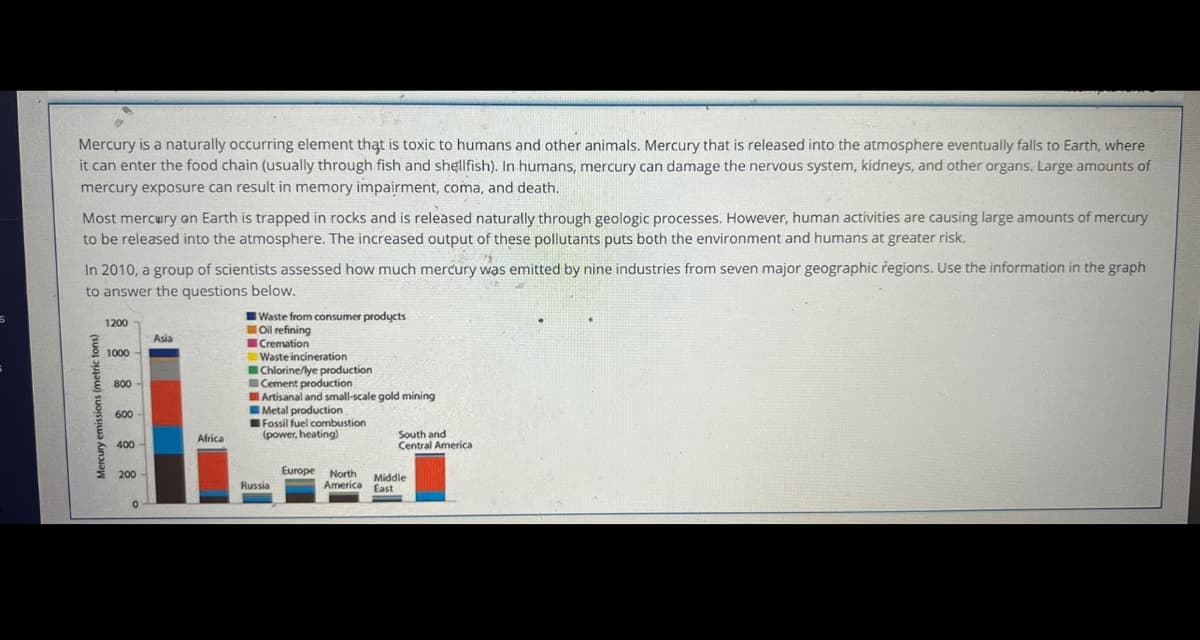Chapter21: Phytochemicals
Section: Chapter Questions
Problem 12RQ
Related questions
Question
About how much mercury was emitted by fossil fuel combustion in Asia?
A.)340 tons
B.)0 tons
C.)40 tons
D.)525 tons

Transcribed Image Text:Mercury is a naturally occurring element that is toxic to humans and other animals. Mercury that is released into the atmosphere eventually falls to Earth, where
it can enter the food chain (usually through fish and shellfish). In humans, mercury can damage the nervous system, kidneys, and other organs. Large amounts of
mercury exposure can result in memory impairment, coma, and death.
Most mercury on Earth is trapped in rocks and is released naturally through geologic processes. However, human activities are causing large amounts of mercury
to be released into the atmosphere. The increased output of these pollutants puts both the environment and humans at greater risk.
WE
In 2010, a group of scientists assessed how much mercury was emitted by nine industries from seven major geographic regions. Use the information in the graph
to answer the questions below.
Mercury emissions (metric tons)
1200
1000
800
600
400-
200
0
Asia
Africa
Waste from consumer products
Oil refining
Cremation
Waste incineration
Chlorine/lye production
Cement production
Artisanal and small-scale gold mining
Metal production
Fossil fuel combustion
(power, heating)
Russia
Europe
South and
Central America
North
Middle
America East
Expert Solution
This question has been solved!
Explore an expertly crafted, step-by-step solution for a thorough understanding of key concepts.
This is a popular solution!
Trending now
This is a popular solution!
Step by step
Solved in 3 steps with 1 images

Knowledge Booster
Learn more about
Need a deep-dive on the concept behind this application? Look no further. Learn more about this topic, biology and related others by exploring similar questions and additional content below.Recommended textbooks for you



Biology Today and Tomorrow without Physiology (Mi…
Biology
ISBN:
9781305117396
Author:
Cecie Starr, Christine Evers, Lisa Starr
Publisher:
Cengage Learning



Biology Today and Tomorrow without Physiology (Mi…
Biology
ISBN:
9781305117396
Author:
Cecie Starr, Christine Evers, Lisa Starr
Publisher:
Cengage Learning

Concepts of Biology
Biology
ISBN:
9781938168116
Author:
Samantha Fowler, Rebecca Roush, James Wise
Publisher:
OpenStax College

Comprehensive Medical Assisting: Administrative a…
Nursing
ISBN:
9781305964792
Author:
Wilburta Q. Lindh, Carol D. Tamparo, Barbara M. Dahl, Julie Morris, Cindy Correa
Publisher:
Cengage Learning